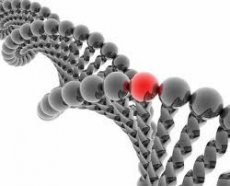New publications
Reason found why 10% of the human genome is made up of retrovirus genes
Last reviewed: 01.07.2025

All iLive content is medically reviewed or fact checked to ensure as much factual accuracy as possible.
We have strict sourcing guidelines and only link to reputable media sites, academic research institutions and, whenever possible, medically peer reviewed studies. Note that the numbers in parentheses ([1], [2], etc.) are clickable links to these studies.
If you feel that any of our content is inaccurate, out-of-date, or otherwise questionable, please select it and press Ctrl + Enter.

Virologists have identified a mechanism that has allowed retroviruses to replicate efficiently for millions of years as part of mammalian DNA.
The main task of viruses is considered to be the transmission of their own genes to subsequent generations. In an effort to reproduce at any cost - all viruses are no different from other living organisms, including humans.
The difference is in the exceptional simplicity of the virus structure, which is reduced to one molecule - the carrier of the genome, viral RNA, DNA or in some variants their combination. Another difference of the virus is in the dual state of the virus - the "dead" extracellular state of viral particles, or virions, which show virtually no independent activity, and the "alive" state, when the virus enters the host cell and begins to multiply, integrating into the cellular mechanism of DNA transcription.
But, it turned out relatively recently, with the discovery of endogenous retroviruses, that some viruses may not have a virion stage.
These viruses transmit their own genes to subsequent generations without going beyond the cells (hence their name – endogenous, in other words intragenic), and their genetic program, built into the cellular DNA, is considered an integral part of the host genome.
It has now been established that about 8–10% of the human genome consists of nucleotide sequences of retroviruses that infected our evolutionary ancestors tens of millions of years ago.
In other words, one tenth of human DNA consists of retroviral genes that are several million years old (“retro” means that these viruses use the reverse transcription mechanism to replicate their own genome: first, the viral enzyme reverse transcriptase begins to synthesize one strand of DNA on viral RNA, then synthesizes a second strand on this strand, and then this viral DNA, having penetrated the cell’s nuclear membrane, is incorporated into the host cell and functions as a matrix for synthesizing viral RNAs by the host cell).
Researchers from the Oxford Institute, together with the Aarano Diamond Center for AIDS Research (New York, USA) and the Rega Institute (Belgium), decided to find out the mechanism by which ancient retroviruses were able to register themselves in our genes in large quantities.
To this end, they studied the genomes of 38 mammals. From these genomes, they isolated regions containing retroviral nucleotide sequences and then compared them in silico (in silicon, in other words, using specialized computer-mathematical methods) for similarities, differences, and the part they occupy in the viral DNA region.
As the analysis showed, a certain category of endogenous retroviruses lost the env gene, which is responsible for the protein that helps the virus penetrate the cell, at some point in their evolution.
The loss of the ability to infect other cells did not mean the loss of the ability to self-replicate, only now the entire lifespan of the virus began to pass inside the host cell parallel to its own lifespan with the help of viral mobile DNA segments - retrotransposons.
Although the most interesting thing is that with the loss of the infectious function by certain retroviruses, these viruses quickly increased their representation within the genome, the result of which was the predominance of the genetic material of viruses in the DNA of mammals.
By comparing different genomes, the researchers summarized the versatility of this phenomenon: the loss of infectivity resulted in a 30-fold increase in the amount of viral material.
Are endogenous retroviruses dangerous to health?
Viruses cope with the task of spreading their own genes perfectly, having registered in human DNA as passengers without causing damage to transport. For owners, they are, in most cases, non-pathogenic, non-infectious, do not form virion particles, in other words, do not infect anyone, and are present under the regulatory control of cellular DNA transcription.
Looking at it from another angle, there is evidence that some endogenous retroviruses (like some exogenous ones that cause, for example, Rous sarcoma, lymphomas and myelopathies) have oncogenic potential and have every chance of stimulating the development of cancer, although what triggers the processes that force the body to pay such risks is still unclear. The study of “fossil” viruses in our genome is just beginning, so the most informative discoveries that force us to look at our body from a completely different angle are still ahead.
